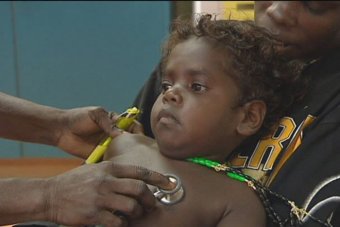
By pairing artwork with medical devices, one physiotherapist is hoping to inspire Indigenous people to better manage respiratory health conditions.
With the death rate for chronic lower respiratory disease three times higher for Aboriginal and Torres Strait Islander people than the general population, Kamilaroi woman Kathryn Potter was inspired to bridge this gap.
In order to help relieve the symptoms and prevent re-admissions, Ms Potter designed a Bubble PEP (positive expiratory pressure) device to improve ventilation for sufferers.
The Therabubble is provided to patients in hospitals but many Indigenous people are self-conscious to use it at home, which Ms Potter wanted to change through art.
“I wanted to give them some pride,” Ms Potter said.
“Unfortunately some Indigenous people can feel shy about their condition and how to manage it.
“They might be afraid to bring the device out and use in front of other people.
“Some Indigenous people can feel shame about what they may see as weakness… a lot are very shy to seek help.”

To offset this associated social stigma, Ms Potter decided to collaborate with a young Bundjalung artist, River Binge, to create artwork to print on the devices.
“The art is to represent the importance of preserving Indigenous culture and looking after ourselves,” Binge said.
In celebration of NAIDOC Week, Binge’s art will be printed on 500 Therabubble devices for the month of July.
“The artwork helps people engage with the therapy… they feel a bit more empowerment when they are provided with the device,” Ms Potter said.
“But it’s also to educate people… non-Indigenous people getting the device will see the art and learn more about our culture.”
Ms Potter said she wants to mingle the two concepts of closing the gap and cultural celebration together.
‘Things are improving bit by bit’
Chronic lower respiratory disease is the third leading cause of death for Aboriginal and Torres Strait Islander people.

Between 2011 and 2013 hospitalisation rates were 2.4 times as high for Indigenous Australians as they were for non-Indigenous Australians.
Nevertheless, there has been a significant decline in respiratory related mortality within Indigenous populations since 1998.
Initiatives targeting smoking, living conditions, overcrowding and immunisation have been found to help curb the disease.
This year marks 10 years since the campaign to close the life expectancy gap between Indigenous and non-Indigenous Australians by 2031.
Ms Potter, who has been working in the health industry for those 10 years, said the life expectancy and chronic disease rates are remained shocking but “things are improving bit by bit”.
“Working day-to-day in the health system you can see all the support that’s happening so I think there will be a transition in time.
“Everyone does care — I think we will see improvements.”

Ms Potter also said she wanted to see a greater representation of Indigenous people working within the health sector, with currently only 40 Indigenous physiotherapists it the whole of Australia.
Receiving an Indigenous cadetship allowed Ms Potter to start her career and she said such programs were very important in increasing the Indigenous presence in the healthcare system.
Ms Potter has donated a number of Therabubble devices to Indigenous communities and next week she will take some to Palm Island, off the Queensland coast, where many Indigenous children have respiratory problems.
By Paige Cockburn
